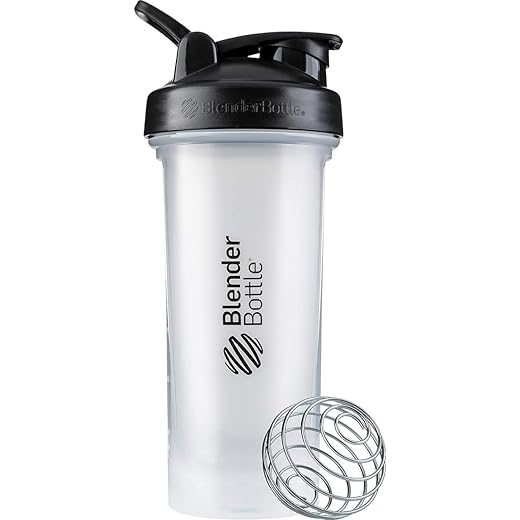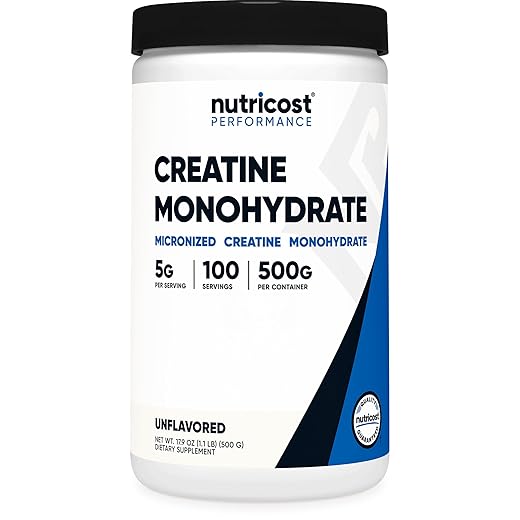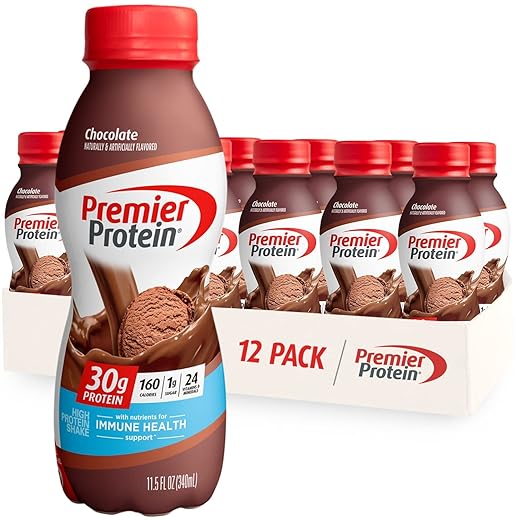Fuel Your Gains with Smart Smoothies
High-protein smoothies are one of the simplest, most flexible tools for building muscle—fast to make, easy to tweak, and effective when dosed right. This article gives clear, data-driven guidance on choosing, building, and comparing shakes so you can maximize gains without wasting time or money. You’ll get science-backed dosing, ingredient trade-offs (protein types, sugar, calories), and practical recipes.
We’ll cover why protein smoothies work for muscle gain; how to build the perfect muscle-building smoothie with macro targets and ingredient notes; three recipe tiers (quick, budget, gourmet); a side-by-side comparison of ready-made shakes and powders based on protein, sugar, taste, and price per serving; prep and timing tips; and a concise buying guide below.




Why Protein Smoothies Work for Muscle Gain
What muscle growth actually requires
Muscle gain needs two things: a resistance stimulus (lifting) and sufficient building blocks—protein and calories. Lift heavy and consistently, then give your muscles the raw materials to repair and grow. In real life that means matching your training with meal planning, not just random snacks.
Protein targets & the leucine trigger
Aim for roughly 1.6–2.2 g protein per kg bodyweight daily. For an 80 kg person that’s about 128–176 g/day. Spread that across 3–5 meals: target ~20–40 g protein per meal. Each meal should deliver ~2.5–3 g of leucine (the amino acid that “flips the switch” on muscle protein synthesis). Practical tip: 25–35 g of whey or a complete protein usually hits that leucine threshold.
Liquid meals vs whole-food meals
Smoothies digest faster, pass through stomach quicker, and are easier to down after a tough session when appetite is low. Whole foods offer more chewing satisfaction and fiber but can be bulky when you need calories on the go. For post-workout timing and convenience, liquids are hard to beat.
Calories: mass gain vs lean-bulk
To gain mass you need a calorie surplus. A traditional bulk adds ~300–500 kcal/day; lean-bulking aims for ~150–300 kcal to minimize fat gain. Smoothies are a tidy way to add 300–500 kcal without extra meal prep—think nut butter, oats, milk, and protein powder.
Why smoothies are practical
They’re customizable (fast whey for post-workout, casein at night), portable, and make hitting per-meal protein and leucine thresholds simple. Quick how-to: calculate your daily protein, divide by meals, and build a smoothie recipe that gives you that protein plus the extra calories you need. Next up: how to build the perfect muscle-building smoothie—macros, ingredients, and smart swaps.
Building the Perfect Muscle-Building Smoothie: Macros & Ingredients
Target macros per shake (practical targets)
Your shake should match your goal. Rough, real-world targets per serving:
Protein source trade-offs
Whey — fast-absorbing, high leucine, mild taste; great post-workout (e.g., Optimum Nutrition Gold Standard).
Casein — slow-release, better for nighttime; creamier texture (try Dymatize Elite Casein).
Milk protein blends — balance of fast+slow, smooth mouthfeel.
Soy — complete plant protein, decent leucine but beany notes; watch allergies.
Pea — good digestibility, neutral/earthy taste; lower leucine per gram than whey, best in blends (Vega Sport or Orgain blends).
Rice — hypoallergenic but low in lysine; combine with pea for completeness.
Carbs: recovery vs calorie density
Fruit (berries, banana) adds vitamins + natural sugar and texture. Oats add slow-release carbs and thickness. Dextrose/maltodextrin spike insulin fast — useful post-workout when quick glycogen refill matters. For a long, filling shake choose oats + banana; for fast recovery go dextrose + fruit.
Fats, add-ins and functional extras
Nut butters and avocado add calories, creaminess, and satiety. Use 1 tbsp nut butter or ¼ avocado for 8–12 g fat. Useful add-ins:
Practical swaps & texture tips
Dairy-free: use pea/soy blends + oat or almond milk. Low-FODMAP: lactose-free milk, berries, kiwi, or small oats portions. To avoid extra sugar: use frozen fruit, vanilla extract, Greek yogurt for creaminess, and only 1 serving of high-sugar fruit. For thickness add a handful of ice or 1 tbsp chia.
High-Protein Smoothie Recipes: Quick, Budget & Gourmet
Quick Post-Workout — Whey + Banana
Ingredients: 1 scoop fast whey, 1 medium banana, 8 oz skim milk, ice.
Budget-Friendly Everyday
Ingredients: 1 scoop budget whey/plant blend, ½ cup oats, 8 oz milk (or water), 1 tbsp peanut butter.
High-Calorie Bulker
Ingredients: 2 scoops protein, 1 cup whole milk, 2 tbsp almond butter, ½ cup oats, 1 banana.
Low-Sugar Lean Mass
Ingredients: 1 scoop pea/soy blend, 1 cup spinach, ½ cup mixed berries (frozen), ¼ avocado, water/unsweetened almond milk.
Lactose-Free Option
Ingredients: 1 scoop hydrolyzed pea/rice blend, 1 cup oat milk, 1 tbsp chia seeds, frozen mango.
Dessert-Style Treat (Muscle-Friendly)
Ingredients: 1 scoop chocolate whey or cocoa pea blend, ½ cup Greek yogurt (or dairy-free coconut yogurt), 1 tbsp cocoa, ice.
Practical quick notes: most blends take 30–60 seconds. Batch: pre-portion dry mixes in bags and freeze fruit to save 3–5 minutes per drink. Swap bases (milk/water) to adjust calories, price, or allergies.
Comparing Ready-Made Shakes and Powders: A Data-Driven Approach
A repeatable comparison framework
Compare every product on these key metrics so you can rank options quickly:
Score each metric 1–5 and weight by what matters to you (e.g., protein 35%, price 25%, taste 20%, ingredients 20%). Small anecdote: I scored three powders in a week and the simple weighted approach made the best daily winner obvious.
How to calculate price and why serving size matters
Price per serving = total container price ÷ labeled number of servings. For precision, use price per gram: (price ÷ total grams) × grams per scoop — helpful when brands define scoops differently. Serving size matters because “30 g scoop” vs “40 g scoop” can hide lower protein density; compare protein per 100 g or protein-per-calorie to see true value.
Read labels & watch for red flags
Check the “Added Sugars” line or ingredients list for syrups, cane sugar, or dextrose. Naturally occurring sugars (milk, fruit) are fine contextually. Beware:
Decision rules (simple, actionable)
Product-type recommendations (who should buy what)
Next up: practical tips to prep, batch, and budget smoothies so they actually fit your week.
Prep, Convenience and Cost: Making Smoothies Fit Your Routine
Batch vs pre-portion: simple systems that stick
Batching frozen smoothie packs on Sundays saves morning decisions. Method: portion fruit + greens into freezer bags or silicone trays, label with date, and stash scoops of dry mix in a jar or small bags. To thaw: move a pack to the fridge overnight or run under warm water for 5–10 minutes and blend. If you want ultra-fast mornings, pre-blend and freeze in 12–16 oz portions — then thaw in the fridge or microwave 15–25 seconds and shake.
Gear that saves time (and hassle)
Good small blenders: NutriBullet Pro (personal, cheap), Ninja BL770 (power + single-serve), Vitamix Ascent (heavy duty, best texture). For transport: BlenderBottle Classic for shakes, Hydro Flask or Klean Kanteen for insulated trips, and Lock & Lock glass containers for fridge storage. Use wide-mouth bottles to clean easily.
Cost per serving — quick comparison
Save on cost by buying bulk protein, choosing frozen/seasonal fruit, and using oats or Greek yogurt as cheap calories. Spend where it matters: a reliable protein powder, and small performance extras like creatine (cheap per dose, high ROI).
Cleaning, transport & food safety
Cleaning hacks: blend warm water + dish soap for 30 seconds, or use baking soda + vinegar for stubborn smells; bottle brushes rescue narrow-neck containers. On-the-go tips: freeze your smoothie as a “slushy” to keep cold longer, and use leakproof lids.
Fridge life: best within 24–48 hours; frozen packs last ~2–3 months. Toss if you notice a sour smell, pronounced curdling that won’t re-mix, or mold. Keep a simple weekly routine (prep, freeze, rotate) and smoothies become as automatic as your morning coffee.
When to Drink, How Much, and Tracking Progress
Timing: pre vs post vs meal replacement
Pre-workout: a small shake with 15–25 g protein + carbs (banana + whey) 30–60 min before lifts helps energy.
Post-workout: a fast-digesting 20–40 g whey shake (e.g., Optimum Nutrition Gold Standard scoop ~24 g) with water or milk is practical for rapid amino delivery—especially when you can’t eat a meal right away.
Meal replacement: choose a higher-calorie RTD or blended meal (30–50 g protein + 400–700 kcal) when you need convenience and fullness; prefer whole-food meals when you have time.
How much, and spreading protein
Aim for a daily target of roughly 1.6–2.2 g/kg bodyweight. Distribute evenly across meals for better muscle protein synthesis—target ~0.3–0.4 g/kg (roughly 20–40 g) per feeding, spaced every 3–4 hours.
Practical example: 80 kg lifter → target ~128–176 g/day → four meals of ~32–44 g each. Use 1–2 shakes to fill gaps, not replace all meals.
Simple tracking systems
Safety & practical tips
Next up: quick buying tips and final practical takeaways to help you choose the best powders and ready-made shakes for your goals.
Short Buying Guide & Final Tips
Prioritize protein-per-serving and a complete amino-acid profile; minimize added sugars. Consider taste and texture—sample packs help. Calculate price per serving to match your budget and compare sugar, flavor, and protein content side-by-side.
Pick a base protein that fits dietary needs, use smart add-ins for calories or recovery, and track results consistently. Keep experiments simple, favor convenience, and choose the shake or powder that fits your routine and wallet—then stick with it and measure progress.












